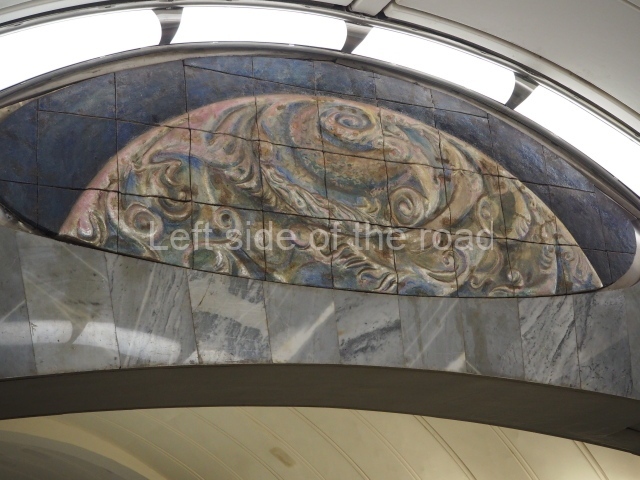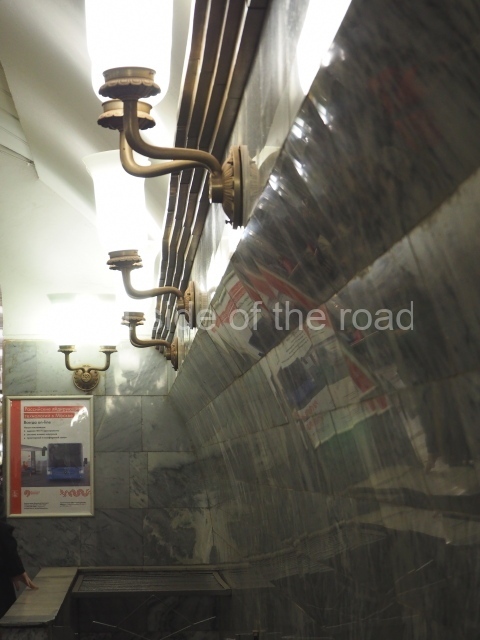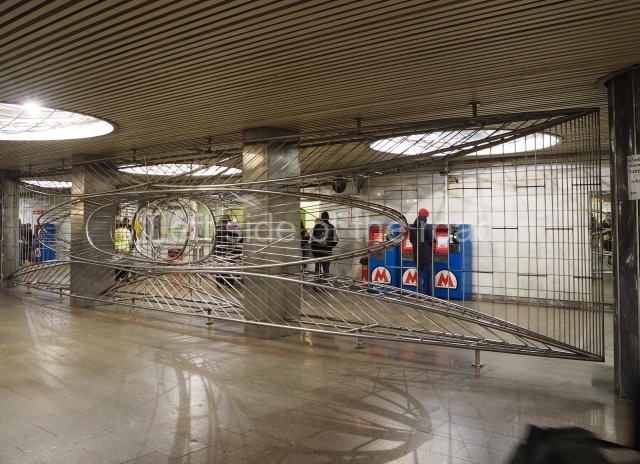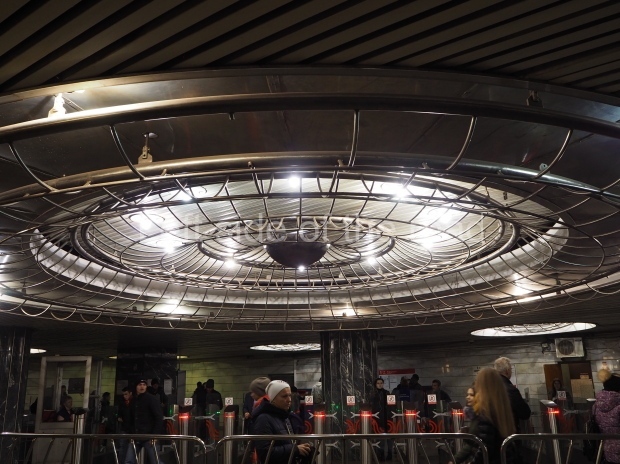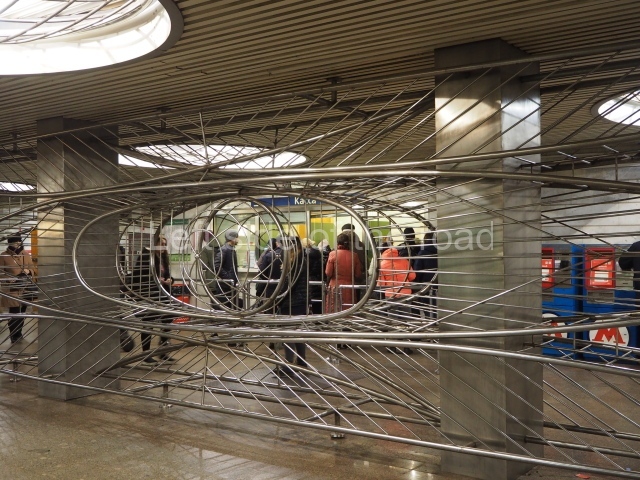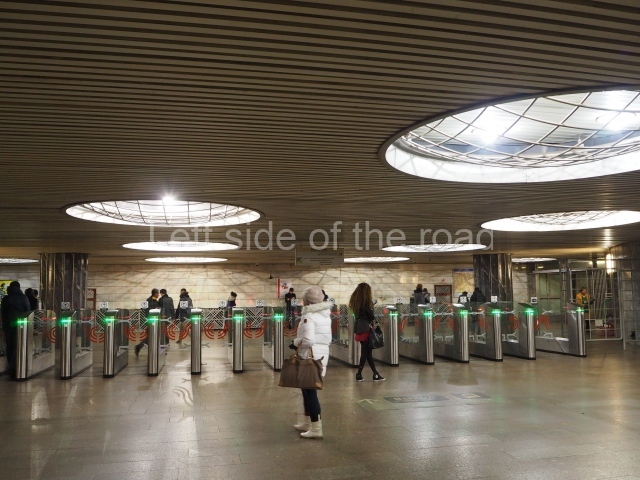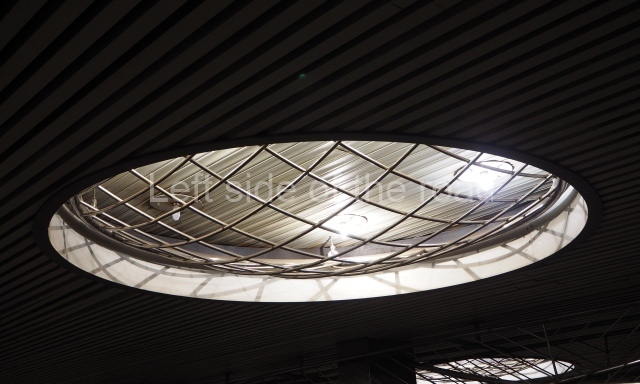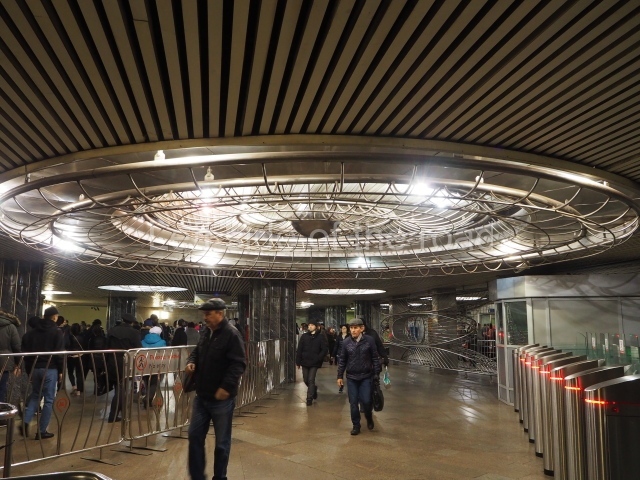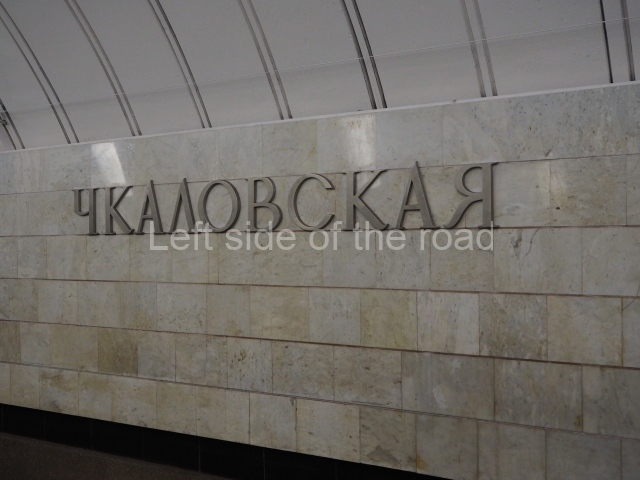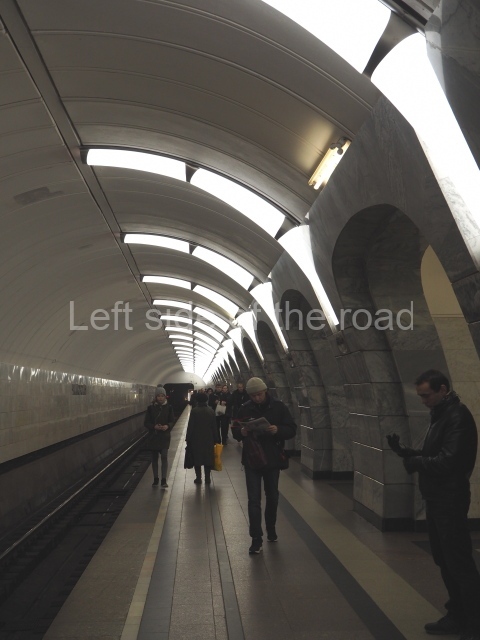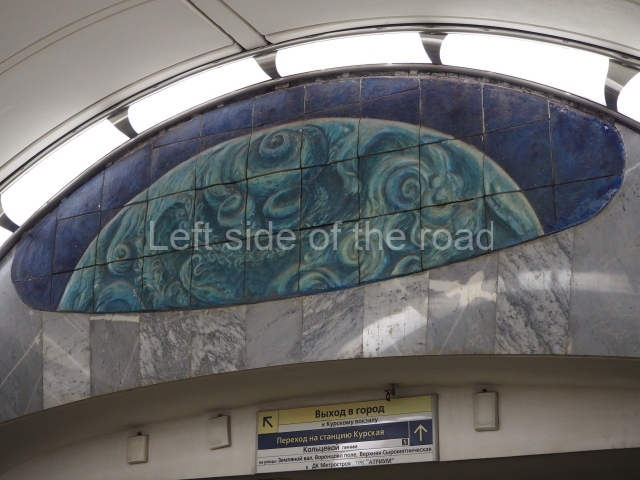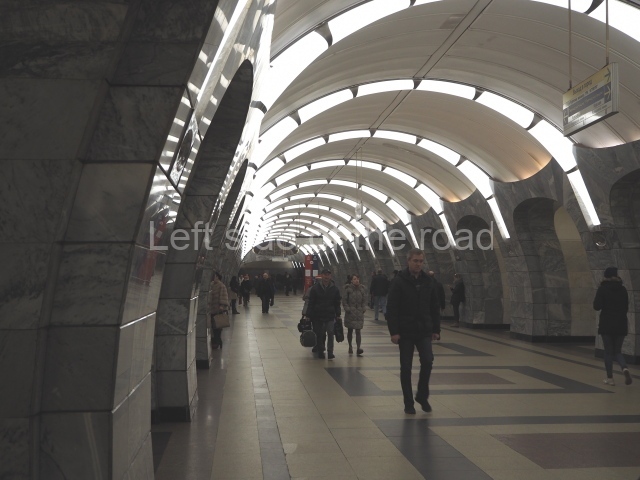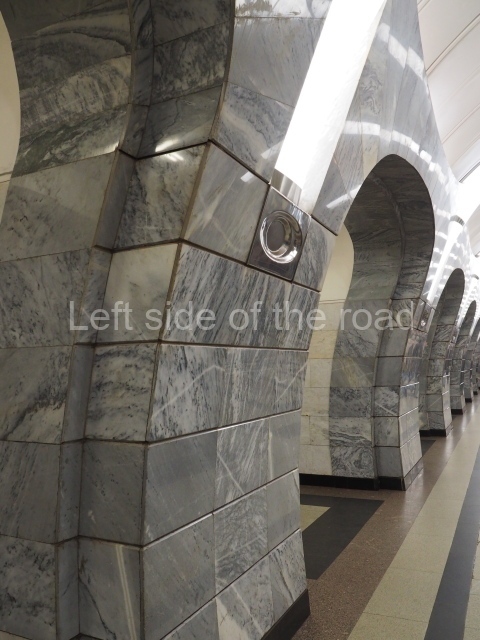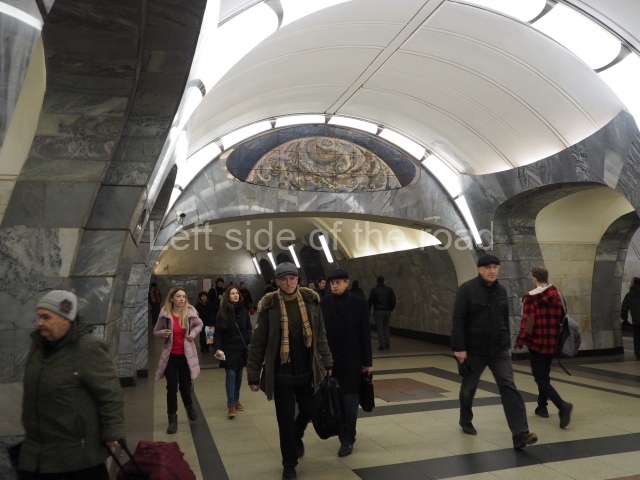Moscow Metro – a Socialist Realist Art Gallery
Moscow Metro – Biblioteka Imeni Lenina – Line 1
Biblioteka Imeni Lenina (Библиоте́ка и́мени Ле́нина, Lenin’s Library) is a station on the Sokolnicheskaya Line of the Moscow Metro. The station was opened on May 15, 1935 as a part of the first stage of the Metro. It is situated in the very centre of the city under the Mokhovaya Street, and is named for the nearby Russian State Library (called the Lenin Library in 1925 –1992). Its architects were A. I. Gontskevich and S. Sulin.
To prevent the disruption of traffic, Biblioteka Imeni Lenina was built using underground excavation rather than cut and cover even though the station ceiling is just two metres (6.5 ft) below ground level. Soil conditions and the narrowness of the space in which the station was to be built necessitated a single-vault design, the only one on the first Metro line. The entire excavation was only 19.8 metres (65 ft) wide and 11.7 metres (38 ft) high. The main station vault was built from rubble stone set in concrete and reinforced with an iron framework. This was lined with an ‘umbrella’ of bitumen-coated paper to prevent groundwater from seeping into the station. The station was finished with plaster, yellow ceramic tile, and marble.
The station originally had two entrance vestibules, one at either end. The southern vestibule, located between the old and new buildings of the State Library, is shared with Borovitskaya. The temporary northern vestibule, which served Biblioteka Imeni Lenina and Aleksandrovsky Sad, was removed in the 1940s.
From this station it is possible to transfer to Arbatskaya on the Arbatsko-Pokrovskaya Line, Aleksandrovsky Sad on the Filyovskaya Line, and Borovitskaya on the Serpukhovsko-Timiryazevskaya Line.
Though Biblioteka Imeni Lenina and Aleksandrovsky Sad (then called Komintern) were built concurrently, they were not connected by transfer passages until 1938, when Aleksandrovsky Sad became part of the Arbatsko-Pokrovskaya Line. Before this the line from Aleksandrovsky Sad to Kievskaya operated as a branch of the Sokolnicheskaya Line.
Text above from Wikipedia.
Biblioteka imeni Lenina
Date of opening;
15th May 1935
Construction of the station;
arched, shallow
Architects of the underground part;
A. Gontskevich and S. Suslin
Transition to stations Arbatskaya of the Arbatsko-Pokrovskaya Line and Alexandrovsky Sad
Biblioteka imeni Lenina is the first single-span ‘arched station of the Moscow Metro. Such construction creates not the illusion of open space and height but real open space and height. So, there is a huge unencumbered and undivided space appeared underground.
The platform of the station under such vault seems narrow, so it becomes slightly uncomfortable when crowded. The decoration is utterly concise. The walls are faced with light beige small ceramic tiles. The wide pilasters which decorate carrying belt (line where the vault arches support on the walls) are with dark fancy marble. Long rectangular panels of the same marble are on the walls. They carried the schemes of until there was enough room. There are lines of coffers with stepped edges on the vault of the station. The matted semi-spheres of chandeliers are built in the vault and placed by transverse lines while white spheres were suspended by two lines on the right and left sides from the central axis of the station.
The ceiling is decorated with pink-grey plates of large-crystalline granite from the Vyborg area of the Karelian Isthmus. The platform is rounded by narrow edging of dark grey diabase. The famous ‘library bridge’ is located approximately in the middle of the platform. It opens the exit to the city and transit to stations Arbatskaya and Aleksandrovsky sad, but its main function – a place of meeting. It is customary to make an appointment ‘under the bridge’. When the station is crowded, as soon as one goes under the bridge one appears as in a house. There is dark and quiet. You may read, have a seat on a container for bombs, replace purchases from one bag to another, or try on new dress [a strange comment to make for a public space!].
The northern and southern ends of the station have stairways. Going up by the northern stairway, one appears in a quite large cubic entrance hall with balconies above the track tunnels. The blind wall of the hall is adorned with a mosaic (Florentine mosaic of various facing stones) portrait of V. Lenin. Lenin looks at a broad passageway divided by columns and high forged grille along the axis, which separates people coming from the opposite directions. The passageway ends at the escalators of Arbatskaya. If going by the left part of the passageway, there is an exit from station Aleksandrovsky Sad and, then, the passageway from the library bridge.
The stairway at the southern end of the station goes up to a broad passageway whose wall is decorated with a small majolica portrait of V. Lenin.
Text from Moscow Metro 1935-2005, p63
Location:
GPS:
55.7512°N
37.6100°E
Depth:
12 metres (39 ft)
Opened:
15 May 1935











